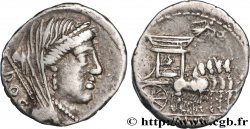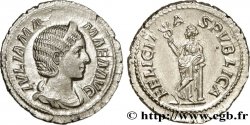bgr_994816 - LUCANIA - THURIUM Nomos, statère ou didrachme
non disponibile.
Articolo venduto sul nostro negozio (2025)
Prezzo : 780.00 €
Articolo venduto sul nostro negozio (2025)
Prezzo : 780.00 €
Tipo : Nomos, statère ou didrachme
Data: c. 410-400 AC.
Nome della officina / città: Thurium, Lucanie
Metallo : argento
Diametro : 20,5 mm
Asse di coniazione : 5 h.
Peso : 7,76 g.
Grado di rarità : R1
Commenti sullo stato di conservazione:
Monnaie centrée. Très beau portrait d’Athéna, bien venu à la frappe. Revers à l’usure régulière. Patine grise avec de légers reflets dorés
N° nelle opere di riferimento :
Diritto
Titolatura diritto : ANÉPIGRAPHE.
Descrittivo diritto : Tête laurée d'Athéna à droite coiffée du casque attique à triple aigrette orné du skylla.
Legenda diritto : F
Rovescio
Descrittivo rovescio : Taureau passant à gauche ; une colombe prenant son envol à gauche entre les pattes ; à l'exergue, un thon à droite.
Legenda rovescio : QOURIWN
Traduzione rovescio : (de Thurium).
Commento
Ce type se rencontre dans le trésor de Carosino (IGCH 1928) enfoui c. 334-330 avant J.-C. Dans une publication en 1949 (”Masterpieces of Greek Coinage), Charles Seltman explique que l’artiste, Phrygillos, a signé trois fois sa monnaie : le Phi devant le portrait d’Athéna, celui sur la croupe du taureau et le pinson, Phrygillos en grec.
This type is found in the Carosino treasure (IGCH 1928) buried c. 334-330 BC In a publication in 1949 (“Masterpieces of Greek Coinage), Charles Seltman explains that the artist, Phrygillos, signed his coinage three times: the Phi in front of the portrait of Athena, the one on the bull's rump and the finch, Phrygillos in Greek
This type is found in the Carosino treasure (IGCH 1928) buried c. 334-330 BC In a publication in 1949 (“Masterpieces of Greek Coinage), Charles Seltman explains that the artist, Phrygillos, signed his coinage three times: the Phi in front of the portrait of Athena, the one on the bull's rump and the finch, Phrygillos in Greek








 Segnalare un errore
Segnalare un errore Stampate la pagina
Stampate la pagina Condividi mia selezione
Condividi mia selezione Fai una domanda
Fai una domanda Consegnare / vendere
Consegnare / vendere
 Descrittivo
Descrittivo















